English
Castellano
Català
Chlorastrolite
Author: Gerald Collegnon
Content by courtesy of : Bay de Noc gem & Mineral Club
Approximately 1.1 billion years ago, a mid-continental rift occurred in what is now known as North America. This rift extended from the Lake Erie region up through Lake Michigan, into Lake Superior and finally down into the Nebraska region. This rifting lasted for approximately 50 million years. During this time period, over 500 separate lava flows poured from this huge rift and accumulated to a depth of over 10 miles in some areas in the Keweenaw Peninsula.
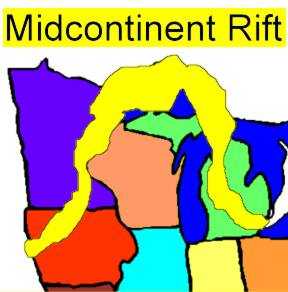
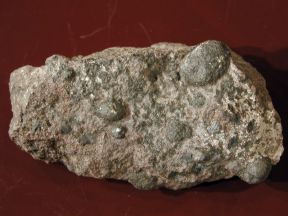
One of the first documentations of Michigans semi-precious greenstone came from Dr. C. Jackson and Dr. J. Whitney in 1847. The two doctors named the small green stones from Isle Royale chlorastrolite. Decades of analysis by many scientists finally resulted in the determination that chlorastrolite had a chemical formula of Ca2(Al, Mg, Fe)3 (SiO4)3 (OH)H2O and was related to the ziosite-epidote family.

In the early 1900s, greenstone was given another name by a writer named Murgoci. Murgoci named the mineral lotrite which was also found in the Carpathian Mountains. Finally, in the early 1920s, Charles Palche, after intense analysis of the mineral, realized that greenstone was, in fact, a new mineral. Palche suggested that the new mineral be named keasargeite in his report to the Calumet & Hecla Mining Company. The name keasargeite was replaced with the name pumpellyite to honor a 19th century United States geological survey geologist named Raphael Pumpelly. X-ray analysis in New Zealand in the mid 1950s determined that pumpellyite, chlorastrolite, and zonochlorite (another green mineral found in the Copper Country) all belong to the same mineral species. In the early 1970s, it was ruled by the IMA that pumpellyite will represent the mineral species and the variety will be chlorastrolite. So, to make a long story short, Isle Royale greenstone is pumpellyite variety chlorastrolite.
As mentioned earlier, chlorastrolite formed in the smaller voids left when the basalt hardened. Most specimens are pea-sized or a little larger. Dime-sized chlorastrolite are rare and quarter-sized are considered museum pieces. The largest chlorastrolite believed to exist is in the Smithsonian Institute in Washington D.C. and is approximately 1-1/2 inches by 3 inches.
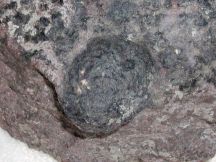
Chemically, chlorastrolite is Ca2 (Al, Mg, Fe)3 (Si O4)3 (OH) H2O. Chlorastrolite ranges in colorfrom a light bluish green from Isle Royale to a dark green found throughout Keweenaw and Houghton Counties. Chlorastrolite can be found as solid amygdules (nodules), as green needles in quartz and prehenite and finally as velvety linings with copper and rarely silver inclusions. The name Chlorastrolite is derived from two Greek words. The first being chloros which means green, and the second being astros which means star. Chlorastrolite is best described as an opaque, bluish-green stone, which has a turtle-back pattern.
Each eye in the pattern is chatoyant which makes this semi-precious gemstone so enchanting to look at. Chatoyancy is the shimmering effect of reflected light from microscopic bundles of mineral needles, which radiate from common centers when a polished chlorastrolite is gently moved in different directions. This is the same effect you get from African Tigers Eye.
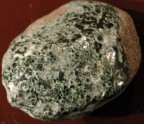
Content by courtesy of :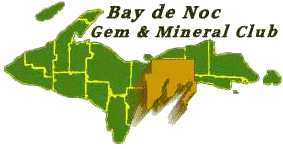
Information | Mineral photos | VIDEOS | Articles | Fairs | Web directory | Classified ads | Minerals Books | Shop

